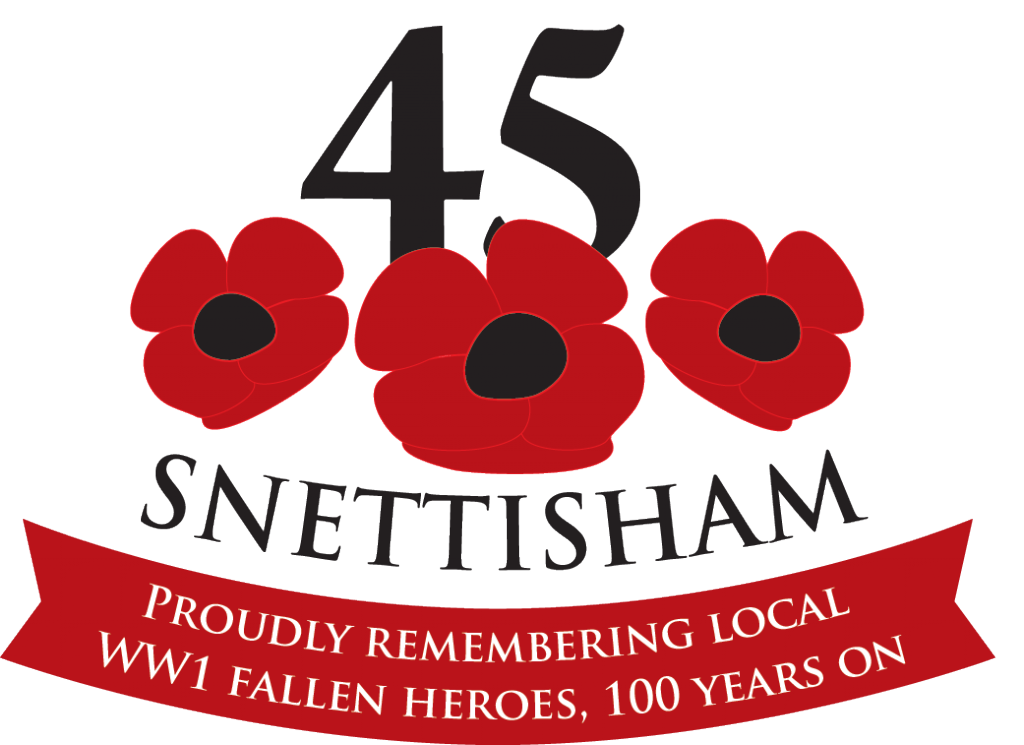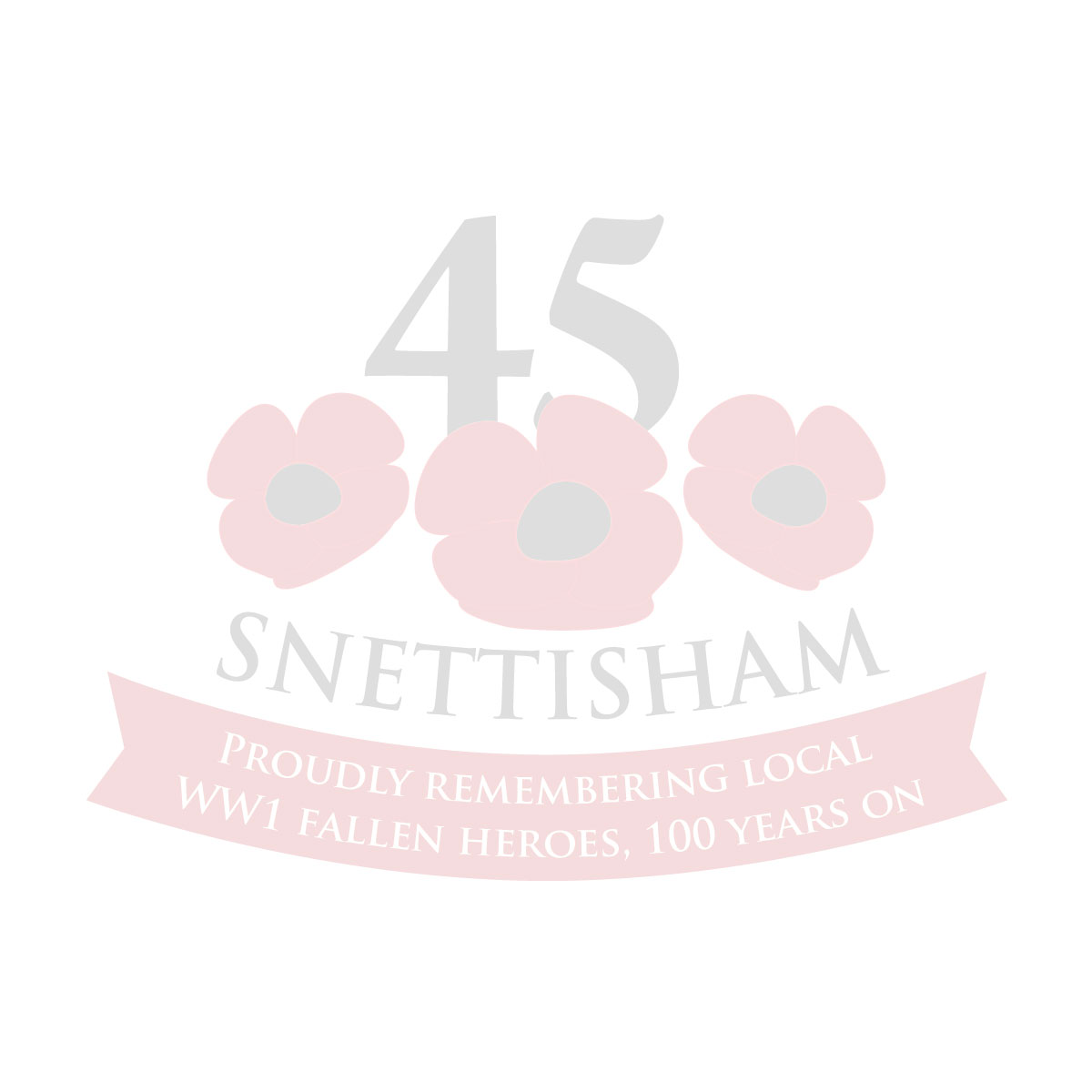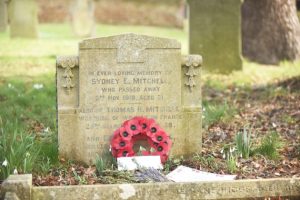
The soldier:
Sydney Edward Mitchell of Snettisham, Norfolk enlisted on the 14th December, 1914 in Norwich. He was 19 years and six months old. His occupation was listed as ‘footman’.
He was assigned service number 17319 and entered the Norfolk Regiment.
On the 20th October 1915, at the rank of Lance Sergeant in the Norfolk Regiment’s 1st Battalion, he was badly wounded, receiving a ‘hand-grenade to the face’. He was shown as posted back to depot (England) on the 30th July 1916.
Regimental records show that he was believed to have gone to the Norfolk War Hospital (previously the Norwich Asylum) but checks with the Norfolk Records Office show he never arrived there and was diverted to another Hospital elsewhere in the UK.
On the 20th September 1917, Sydney was discharged from the army, his duty done. His records show he was granted ‘The King’s Certificate’ entitling him to wear a pin in public denoting he had served his country and had been invalided out of service (such was the public pressure on young men to enlist and go to the front at the time).
Sydney Ernest Mitchell died on the 2nd December 1918, at the age of just 21, his death coming only three weeks after the signing of the Armistice. He never recovered from the effect of his war wounds, dying of influenza and pneumonia at 6, Lambolle Place, Hampstead, London in the presence of Gilbert Newton. Gilbert was a retired Metropolitan Police inspector (D Division -Marlybone) and the husband of Sydney’s Aunt Agnes Maud (married 1909 in Grove Park West, Middx), 6 Lambolle Place being their family home.
Sydney was returned to Snettisham and buried in a private grave in St. Mary’s Churchyard. His grave also references his uncles Henry L and Thomas H Mitchell who both also died in the war (their names also appearing on Snettisham’s Roll of Honour).
The man:
Sydney Edward Mitchell was born on the 10th July 1887 in Snettisham, Norfolk. his mother was Ellen Mary Mitchell, aged 21.
He was baptised on the 13th September 1897, in St. Mary’s church, Snettisham. His mother being listed as a ‘single mother’, particularly difficult in those times.
In 1901, Sydney (aged 3) lived with his grandfather, Robert (a handyman), his uncles William (26) and Henry Layte/Lait (11) and his mother (24) at Hall Farm Cottage, Snettisham.
From the 1st June 1904 to the 28th April 1911 Sydney attended Snettisham School (This school is still in existence as the local primary school). He was shown ‘working’ upon leaving.
By the 1911 census, Sydney (13) lived at Chapel Cottage, Snettisham with his mother (her occupation now shown as ‘launderess’) and his Uncle Henry Layte/Lait (21). Henry’s occupation is given as a ‘labourer’.
This information highlights a particular tragedy, as it reveals Sydney’s mother lost both the men she was living with, her brother Henry Layte/Lait and her son, Sydney to the war. She also lost another brother Thomas H Mitchell.
In 1916 Sydney’s mother married Arthur Pooley of Dersingham, Norfolk at the age of 40. Arthur passed away in 1949 (aged 72) and Ellen died in Fakenham in 1955 (aged 79).
Footnote:
Sydney’s grave was not listed on the CWGC ‘war graves’ site. His final resting place is publicly known once more due this project.
Pictures attached –
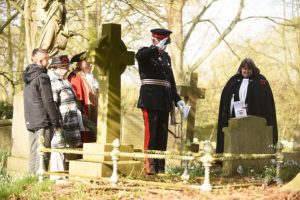
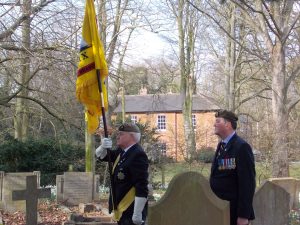
wreath, spray and letters laid at Sydney’s headstone following 100th anniversary graveside service to him.
Lord Lieutenant of Norfolk, Richard Jewson, watched by Mayor of Kings Lynn and West Norfolk, Carol Bower, Chair of Snettisham Parish Council, Ros Pugh, Heacham and Snettisham Vicar, Rev. Veronica Wilson and school pupil Kian Suckling lays a poppy wreath at Sydney’s grave.
Senior members of the Norfolk Regimental Association with their colours attend to pay their respects to Sydney, their fallen comrade.
